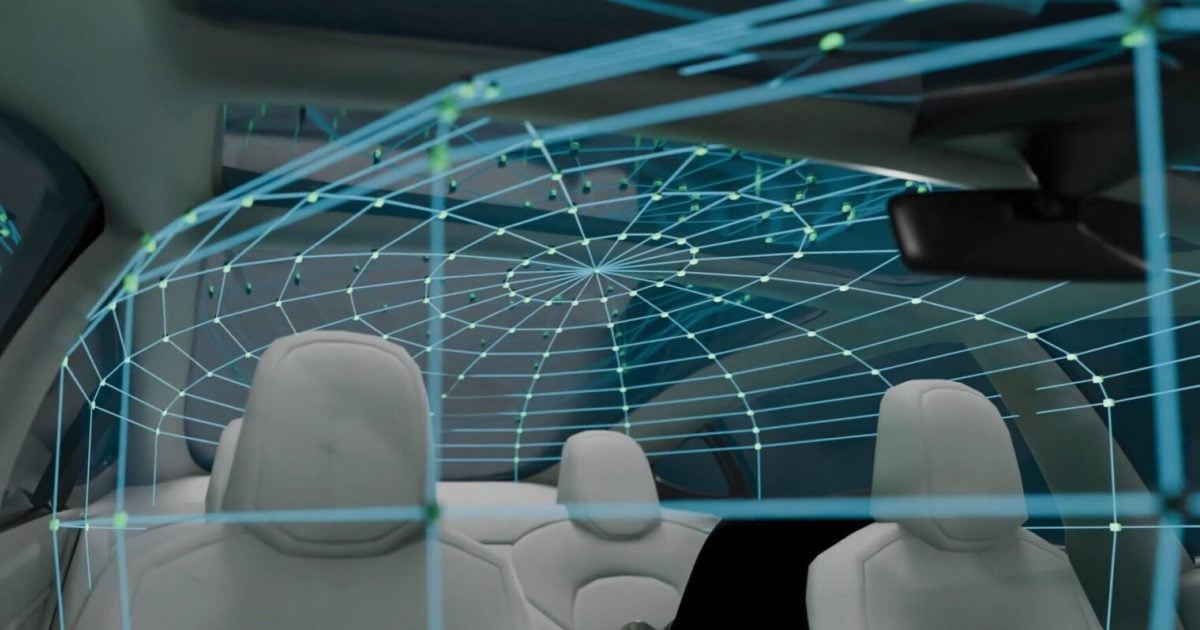
SPONSORED CONTENT-- Like many mavericks, Eric Simone left a very successful career in a large technology company (IBM) to launch his first start up – Chicago Compete Inc. He attracted stellar brands to his client-server solution, which moved away from the “main frame” and onto the main stage with a software called VisualAge. Initial customers included The Gap, State Farm, Allstate, Loyola University Medical, Sears and other consumer-based companies.
“I saw a need,” Simone said, pointing out the importance of staying close to customers to fully understand their business challenges and to stay with implementations of software solution through the entire implementation. “All of my customers needed training and support, so I stayed with each customer and their project for several weeks or even months to train and help them build software.”
Today, Simone is founder and CEO of ClearBlade, one of the most successful “out of the gate” IoT companies in the world, moving rapidly beyond proof of concept to large scale implementations including many in public transportation, smart cities, construction and more.
Simone has been an outlier from the beginning, helping to rebuild the US Air Traffic Control system immediately after graduating from college. Simone intuitively understands the value of frameworks and standards and understood the power of “open” before the idea of open source became “a thing.”
“I sold the same framework created for US ATC to Kodak in 1992, and the IBM Lab in Raleigh picked up on it and brought me in for 3 months to harden the code and document it. I then trained a team of consultants on a project for the City of Hamilton, Canada.”
The “wayback machine” is important in understanding how Simone envisions connected solutions years in advance of their real-world manifestations and growth.
“Compete was actually conceived in the Summer of 1994 at a Boston Market in Chicago,” he said. “I still have the napkin. The original idea was to build NCAA Tournament and Fantasy Football software. That’s why I named it Compete.”
Simone, like many out-of-the-box entrepreneurs, moved from industry to industry, gaining exposure to challenges at organizations including Johns Hopkins Hospital, where he developed their Patient Identification System (patient intake).
And that was in the early-1990s, before Eric met the Internet and “World Wide Web.” He moved to San Francisco, and made friends in Palo Alto. Over the next 2 years Compete grew from 2 to 12 people while the .com thing was really starting to heat up.”
Compete grew from 13 to more than 80 employees by 1999, but missed the software bubble, while other companies came out of nowhere runtime engines built on Java, and browsers built by nearly everybody.
“That is when I burned it into my brain: software wins! Enterprise runtime software wins BIG.” Simone sold Compete to Perficient for $63 million in 2000 and moved to Austin. Even as the .com bust happened, Simone temporarily retired and supported his beautiful wife to this day open a fashion boutique and give birth to their children, and started a short film non-profit called Austin Movie Makers, dedicated to producing the script winner of the Austin Film Festival's teenage screenwriting competition.
But even that was not enough to keep Simone’s overactive brain busy, eventually leading him to create ClearBlade focusing on enterprise modernization (from mainframe to modern software, growing from 1 to 35 people in a year and generating $4 million in revenue).
“We started shifting the business towards mobile and placed our brilliant CTO, Aaron Allsbrook, on a project at Liberty Mutual in Boston to build their new insurance apps to compete with GEICO's apps. This was all the evidence we needed to know that ClearBlade was destined to become a software company.”
In 2014, the company launched v1.0 of the ClearBlade Platform, working on a dating app and an IoT style project for one of the largest construction and consumer tool businesses in the world, winning out against PTC:Thingworx, AWS IoT, IBM Watson IoT, and Microsoft Azure IoT. “They developed a comprehensive scorecard, and, after several months, they determined that ClearBlade was the clear winner,” an accomplishment Simone is proud of to this day and one which set ClearBlade firmly in the direction of IoT and Industrial IoT.
Since then, with increasing focus on providing an agnostic, open platform that can work with any device, sensor, gateway, network protocol, software platform, cloud or other IoT / IIoT component, ClearBlade has won deals with one of the largest train operators in the world, one of the largest smart city developers in the world, and with one of the largest distributors of hardware in the world.
Given Simone’s colorful history and accomplishments in scaling connected systems at an unusually high scale, we’re sharing his vision for IoT as part of this IOT INNOVATORS series.
What drew you to IoT?
We started to see a major shift with the iPhone in 2007 after a series of watershed moments regarding the future of software and Internet connectivity. I got together with the talented Aaron Allsbrook, who saw the potential of the MQTT (messaging) protocol, and we built it into products for mobile devices. Mobile-Backend-as-a-Service (MBaaS) was our original idea, but it became clear very early on that this was a precursor to IoT before IoT became trendy. Once that idea sunk in, that we could connect and control everything over the Internet with the right devices, software, networks and business models – it was evident this was the business we wished to be in.
When were you first introduced to IoT?
We were opportunistic and wanted to serve our customers; we didn’t just wake up one day and think, let’s do IoT. We had very specific, tangible challenges to solve for our customers and we did so by building IoT solutions from the ground up. It worked. IoT in that sense found us, not the other way around.
It became immediately clear that what we built would need to scale to support millions of concurrently connected devices, and we happened to pick the right standards, protocols and technology partners (luck has a way of showing up when you do your homework). We new the platform we were building needed to work in the cloud and at the edge, that it needed to be secure from the ground up, meeded to scale to millions of devices and play nice with others by integrating with legacy systems AND other cloud or on-premise software.
We chose to bridge the past and the future and ended up succeeding in the present. Today the number one reason customers choose us is that they need a flexible IoT backbone that can integrate with anything, without expensive vendor lock ins and other outdated business models. The other number one reason customers choose us is that we naturally scale, not just technically but financially.
What was your first IoT project?
Our mobile app and ticketing system for a non-profit who wanted to identify VIP members when they showed up at an event. They had an ancient Microsoft-based ticketing system, but we were able to come in and integrate that with a very cool mobile app that included location-based services and more. The organization could then deliver exactly the right whisky and champagne to their largest donors and ticketholders for incredible customer experience. This was done back in 2015.
What are you doing/working on today?
We’re in the middle of implementing massive projects in public transportation (for train safety automation), smart buildings to save on energy costs, secure entry and so forth, and connected retail solutions instrumenting essentially everything within a venue (amusement park, mall, stadium) to make the experience for consumers convenient and fun and to attract more loyalty and revenue for our customers in the process. We’ll be sharing a lot of announcements about these projects and others in the future.
What’s the future of IoT and Industrial IoT from your vantage point?
We’re doing a lot of development in real-time data analytics and insights, using AI and more, and are very focused on multi-edge compute, and are finding that the right business models are to partner with equipment manufacturers, their distributors, and be ready to bring connectivity and intelligence to infrastructure that is already in place and can be made safer and more efficient with sensor-based management solutions. In a vacuum, the idea of IoT doesn’t work. It works when it enhances what we have today and enables innovation for future products and services. It’s the most ecosystem-dependent technology we’ve ever experienced and will be even more so as this new world continues to open up.
Cloud or on-premise orchestration is another huge trend for distributed systems. Compute at the edge, process data locally, connect and consolidate systems and data, and manage centrally means enterprises can dramatically reduce costs while delivering much better results to their customers and consumers.
What’s the most inspiring IoT solution you’ve come across?
There are too many to list, but one of those we are most proud of at Clearblade is our work on the Econet connected water heater solution developed by Rheem. It’s a brilliant connected appliance for homes and offices and can be managed by the consumer with a mobile app, and by the supplier as a managed service. Water heating systems can be turned up or down, even turned off when consumers are away, and can be managed remotely. Econet and their retail distributors can offer rebates, discounts and more – and we were delighted to beat out the obvious “big tech guys” with our solution.
What are your predictions for IoT?
We’re in the very first inning. The next 25 years will blow away last 25 years on the Internet. This is not hyperbole – this is real. Connected products and services will be a boon for consumers and industry, for environmentalists, city planners, and more. We’re going to see incredible disruption in traditional supply chains – make that MORE incredible disruption in supply chains – we’re going to improve safety and security especially as data technologies including AI, machine learning, automation, edge computing and the intersection of human and machine experiences evolve.
It is still so early. People are still building their resumes in IoT vs. building systems that scale, but that is changing. Proof of Concepts and testbeds are giving way to real, large, and scalable – practical – deployments. That’s where the money is being made. It’s time to move on from science experiments to packaged solutions with software and hardware bundles.
Where do you see the most value created?
We need to standardize. We cannot scale without standards. Traditional vendors think if they give away their software for free in the beginning, they can hook their customers and charge enormous amounts of money for licenses and services over time. That’s not right. And we’re building our business in a different way because of that. We will make a lot of money and run a very profitable big business by doing the right thing for customers, with flexibility and scale.
What is one piece of advice that you would offer a business leader that is interested in IoT?
Go for it – if you do not connect your products today, you will regret it tomorrow. When you do go for it, however, make sure you do your homework and know that this is a buyer’s market. Find partners who are smart enough to help you win, while they also win – find new business models that work for everybody without defaulting to old paradigms and focus on the customer experience above all else.
Arti Loftus is an experienced Information Technology specialist with a demonstrated history of working in the research, writing, and editing industry with many published articles under her belt.Edited by
Ken Briodagh





